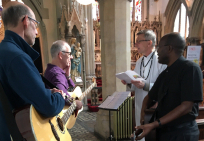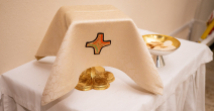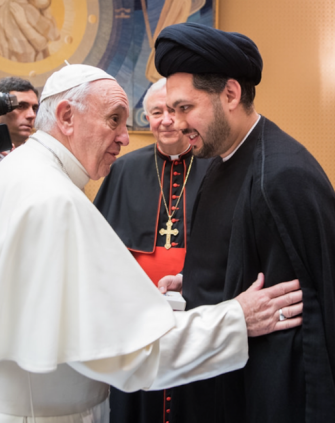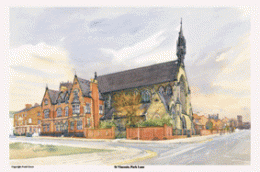Mary – Maryam 1
Bible
The mysteries of Jesus in which Mary is involved.
Annunciation (Lk 1:26-38)
Mary and Joseph (Mt 1:18-25)
Visitation (Lk 1:39-76)
Birth of Jesus (Lk 2:1-20)
Circumcision (Lk 2:21)
Presentation of Jesus (Lk 2:22-38)
Visit of Magi (Mt 2:1-12)
Flight into Egypt (Mt 2:13-18)
Return to Nazareth (Mt 19-22)
Boyhood of Jesus (Lk 2:29-52)
Cana (Jn 2:1-12)
True kin of Jesus (Mt 12:46-50; Mk 3:31-35; Lk 8:19-21)
Women on way to Calvary (Lk 23:27-31)
Mary at the Cross (Jn 19:25-27)
Waiting for the Spirit (Acts 1:12-14)
Adopted children of God (Galatians 4:3-5)
Qur’an
A sura of the Qur’an bears the name of Maryam.
This is sura 19.
The Annunciation is recounted (vv.14-22) and then the virgin birth of Jesus (vv.22-33) which differs from the account in the Gospel of Luke. This concludes with a passage about Jesus stating “it would not befit God to have a child” (v.34). This is why in the Qur’an Jesus is most frequently referred to as “Jesus son of Mary” (see Accompanying Ramadan pp.11. 26-27).
But further information about Mary is given in sura 3 (sûrat âl-imrân)
“Imran is a Biblical figure, being the equivalent of Amram, grandson of Levi and father of Miriam, Aaron and Moses (see Exodus 6:16-20; Numbers 20:59). The ‘Imran of Q 3 is not, however, this person, but the husband of the mother of Mary.
Yusuf Ali explains this: “Now [from Q 3:35 onwards] we have the story of Jesus. As a prelude we have the birth of Mary and the parallel story of John the Baptist, Yahya the son of Zakariya. Yahya’s mother Elizabeth was a cousin of Mary (Lk 1:36)… Elizabeth was of the daughters of Aaron (Lk 1:5) of a priestly family which went back to Aaron the brother of Moses and son of Imran…By tradition Mary’s mother was called Hannah.”
The apocryphal Book of James (known also as the Protoevangelium) gives the name of Anna, but calls her husband Joachim. It explains that Joachim was rich, but he was also devout and wished to offer some of his riches for the benefit of the people. Since he had not produced an issue, since he did not have any children, his gifts were refused. So, without saying anything to his wife, he went off into the wilderness to fast for forty days. Anna prayed and lamented: her (temporary) widowhood and her childlessness. She prayed therefor, to have a child, which she promised to dedicate to the Lord.
Imran’s wife said, “Lord, I have dedicated what is growing in my womb entirely to you; so accept this from me. You are the One who hears and knows all,” but when she gave birth, she said, “My Lord! I have given birth to a girl” – God knew best what she had given birth to: the male is not like the female – “I name her Mary and I commend her and her offspring to Your protection from the rejected Satan” (Q 3:35-36).
The mother thinks that only a male child will be acceptable to the Lord, but she is reassured that her daughter will be equally acceptable. So she prays that Mary, and the child Jesus that Mary will eventually bear, will be preserved from the touch of Satan. Consequently Mary and Jesus remained sinless.











Make A Comment
Comments (0)